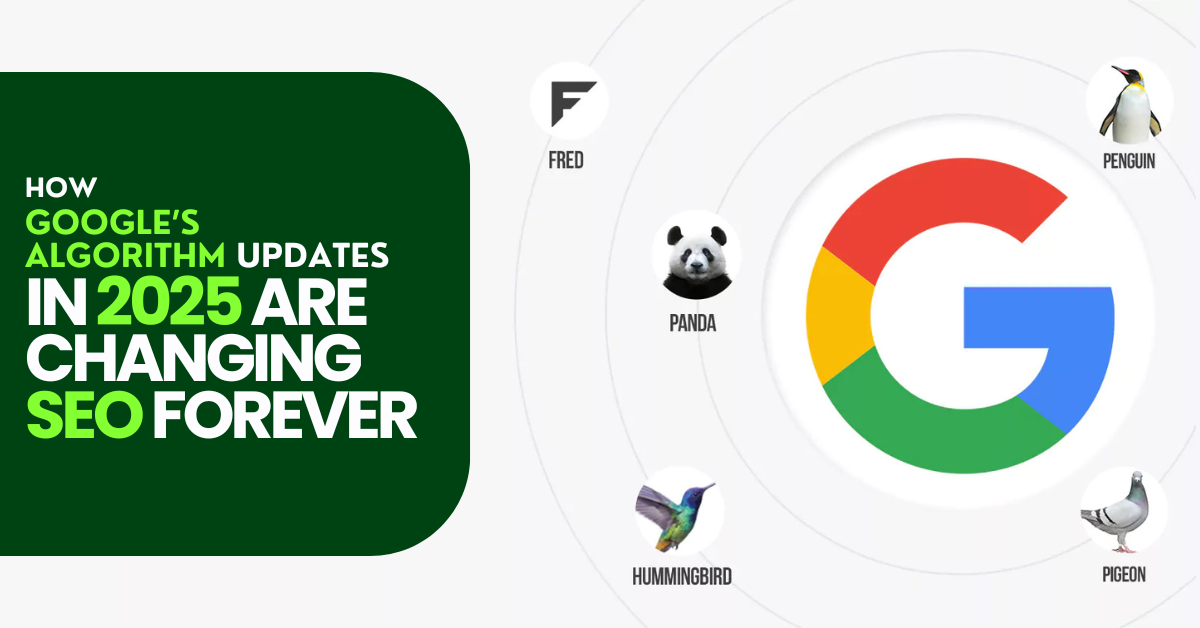If Google were a living, breathing entity, it would be a hyper-intelligent, ever-evolving organism—one that rewrites its DNA every few months. For marketers and businesses alike, keeping pace with Google’s algorithm updates is not just about ranking higher—it’s about survival in a digital world where yesterday’s tactics can get you penalized today.
In 2025, SEO is no longer about shortcuts or keyword tricks. It’s about mastering user intent, creating trustworthy content, and optimizing for experience across devices and platforms. As one of the leading digital marketing agencies in Delhi, our team at Brandhype has closely observed the seismic shifts that define modern SEO. From Panda to AI-driven updates, each change has reshaped how we build and grow online visibility.
Here’s a closer look at the 10 most iconic Google algorithm updates that didn’t just alter the game—they transformed it.
1. Panda (2011): The Content Quality Revolution
Panda was the wake-up call the internet needed. Launched in 2011, it aimed to remove thin, duplicate, and low-value content from top search results. Content farms and keyword-stuffed pages took a massive hit. From this point on, quality, originality, and depth became non-negotiable pillars of SEO.
Panda reminded us: write for people, not search engines.
2. Penguin (2012): Link Building Gets Smarter
Next came Penguin, targeting black-hat link-building tactics. It penalized sites that relied on spammy backlinks, link schemes, and manipulative anchor texts.
This update shifted focus toward natural, high-quality backlinks—earned through valuable content and genuine relationships. The golden rule? If you wouldn’t share the link naturally, don’t build it.
3. Hummingbird (2013): Intent Over Keywords
With Hummingbird, Google began interpreting meaning over literal phrasing. It emphasized semantic search—understanding the user’s intent behind a query rather than just matching keywords.
This update pushed creators to move away from robotic keyword stuffing toward conversational content that answers real questions.
4. Mobilegeddon (2015): Mobile is No Longer Optional
Mobile-friendliness became a ranking factor in April 2015. Websites that weren’t optimized for mobile devices were demoted. As mobile traffic skyrocketed, Google made it clear: responsive design, fast loading, and mobile UX were now essential to stay visible in search.
5. RankBrain (2015): The Rise of Machine Learning
RankBrain introduced AI into Google Search, using machine learning to interpret never-before-seen queries and improve results over time. It prioritized relevance, user behavior, and search intent.
This marked a shift from pure keyword matching to experience-based SEO, where metrics like bounce rate and CTR influenced rankings.
6. Medic (2018): Trust and E-A-T Matter
Focused on YMYL (Your Money, Your Life) content—especially in health, finance, and legal sectors—this update rewarded pages that demonstrated Expertise, Authoritativeness, and Trustworthiness (E-A-T).
Thin or unverified content disappeared overnight. High-authority domains with real credentials, fact-based content, and robust bios gained visibility. Trust became a ranking factor.
7. BERT (2019): Deeper Language Understanding
BERT (Bidirectional Encoder Representations from Transformers) helped Google better understand natural language and the context of each word in a sentence. It could now process queries the way humans do—factoring in nuances and phrasing.
Content that answered queries with clarity, depth, and relevance was rewarded. Writing for humans officially took the front seat.
8. Core Web Vitals (2021): UX Becomes SEO
In 2021, Google introduced Core Web Vitals as ranking signals—measuring loading performance (LCP), interactivity (FID), and visual stability (CLS).
No longer could beautiful but sluggish websites survive. Speed, stability, and mobile responsiveness became key SEO priorities. Page performance started affecting not just rankings—but conversions too.
9. Helpful Content Update (2022): People-First Content Wins
This update targeted content made purely for search engines. Blogs stuffed with keywords or AI-generated fluff without real value lost ground.
The update rewarded helpful, human-first content—written to inform, solve, and guide users. Brands had to become educators, not just marketers.
10. AI & Search Generative Experience (2023–2025): The Future is Conversational
Google’s shift toward AI-driven search and the launch of the Search Generative Experience (SGE) have changed how users interact with content. Google now uses AI to generate dynamic summaries, direct answers, and conversational results on the SERP.
The game has shifted from ranking links to earning visibility within AI-generated snippets, voice results, and context-aware responses. Search is no longer static—it’s interactive, predictive, and hyper-personalized
Why These Updates Matter More in 2025 Than Ever
SEO today is not about chasing trends—it’s about aligning with Google’s core mission: delivering the best experience for users.
If your content doesn’t help people, build trust, or load quickly—it won’t survive. Every update from Panda to SGE reinforces this one message: optimize for humans first, search engines second.
At Brandhype, a top-rated SEO agency in Delhi, we’ve navigated clients through every one of these updates. Our approach is simple: future-proof SEO. That means focusing on content that solves real problems, building websites that work everywhere, and staying ahead of Google’s direction—not reacting after the fact.
Final Thoughts: The Only Constant in SEO is Change
Google’s algorithm updates aren’t just technical shifts—they’re strategic signals. They tell us where user expectations are headed. Behind every drop in ranking lies a lesson. Behind every boost is a principle: value, trust, speed, and relevance.
In 2025 and beyond, success in SEO belongs to those who adapt, evolve, and put people first. If you’re ready to align with the future of search, partner with the experts who’ve done it for over a decade.







